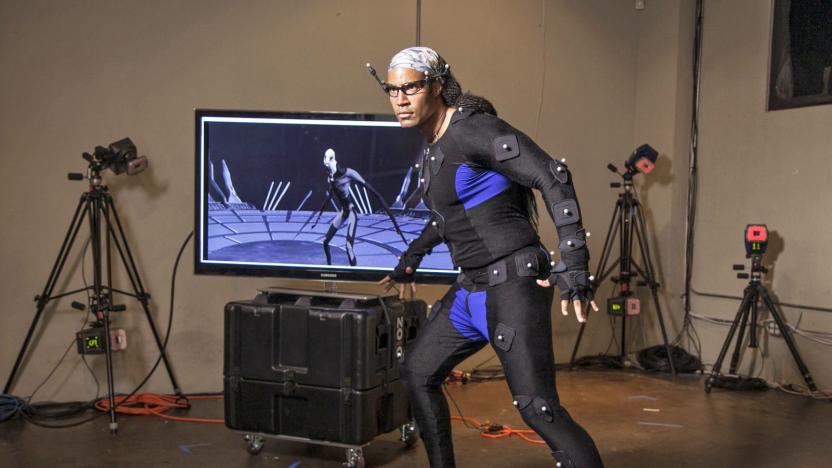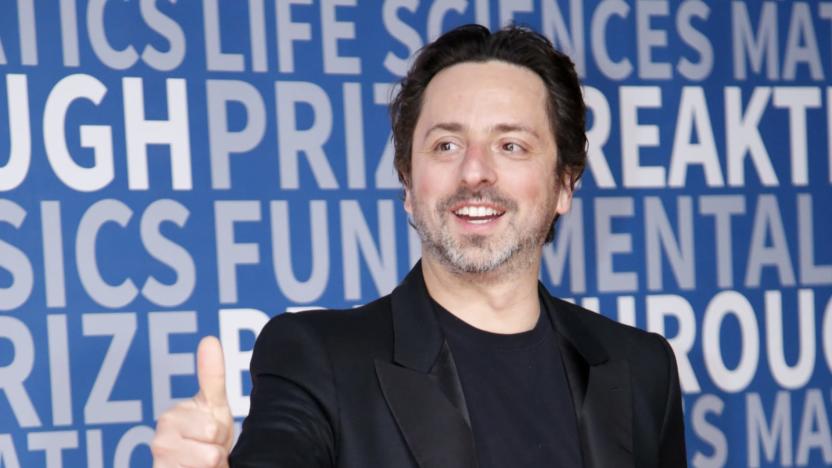physics
Latest

We tried McDonald's super-engineered shake straw
As part of this year's St. Patrick's Day promotions, McDonald's is debuting a highly engineered, hyper-exclusive straw dubbed the "Suction Tube for Reverse Axial Withdrawal," or STRAW for short. It's only available on two days, February 24th and March 1st, with a scant 2,000 of them spread across the entire country. We managed to get our hands on one, however, and put it to a chocolate-minty test.

AI learns to recognize exotic states of matter
It's difficult for humans to identify phase transitions, or exotic states of matter that come about through unusual transitions (say, a material becoming a superconductor). They might not have to do all the hard work going forward, however. Two sets of researchers have shown that you can teach neural networks to recognize those states and the nature of the transitions themselves. Similar to what you see with other AI-based recognition systems, the networks were trained on images -- in this case, particle collections -- to the point where they could detect phase transitions on their own. They're both very accurate (within 0.3 percent for the temperature of one transition) and only need to see a few hundred atoms to identify what they're looking at.

Scientists discover a cosmic-scale particle accelerator
Suddenly, even the Large Hadron Collider seems downright quaint. Researchers have found a combination of cosmic phenomena that's creating the universe's largest known particle accelerator. At least one supermassive black hole in a galaxy cluster has created a electromagnetic tunnel that's accelerating gas to high speeds, only for the gas to travel even faster as it interacts with shock waves from another cluster colliding with the first. The result is particles traveling at a significant portion of the speed of light -- no mean feat for anything that isn't, well, light.

Physicists learn how to measure antimatter
As you might guess, measuring antimatter is rather tricky: it's destroyed the moment it comes into contact with regular matter, so conventional approaches just aren't going to cut it. Give credit to CERN, then, as its Alpha group just measured antimatter for the first time. The team stuffed positrons (positively charged electrons) and antiprotons (protons with a negative charge) into a vacuum tube to create antihydrogen, with a "magnetic trap" keeping a small number of the anti-atoms in existence for long enough to measure them. The team then blasted the antimatter with a laser to study its positrons as they shifted energy levels, producing a spectral line.

Isaac Newton text is the most expensive science book sold
Science texts aren't normally top earners at auctions, but Christie's just proved that there are major exceptions to this rule. The auction house has sold a first edition of Isaac Newton's 1687 masterpiece, Principia Mathematica, for just over $3.7 million -- the most expensive science book sold to date. It was originally estimated to sell for no more than $1.5 million, but its rarity likely helped drive the price up. This is a rare continental Europe edition, with only 80 copies published versus the 400 for Britain.

Disney's real-time motion capture tech only needs a few sensors
Motion capture systems typically require subjects to wear loads of sensors to be able to follow their movements. Disney wants to simplify the process, so its research lab has designed a physics-based system that needs much fewer sensors to work. A human actor can, say, wear sensors on both hands, both feet and the head only -- as you can see above, five sensors are comparably few. The physics-based system then predicts how the rest of the body moves, looking for limb and joint positions that are physically plausible based on the activities of the subject's hands and feet.

Breakthrough Prize awards $25 million to science luminaries
In a ceremony dubbed the "Oscars of Science," the Breakthrough Foundation handed out over $25 million in prizes to physicists, life sciences researchers and mathematicians. Hosted by Morgan Freeman, the event featured Mark Zuckerberg, Sergey Brin and other Silicon Valley notables, a performance by Alicia Keys, actors Vin Diesel and Sienna Miller, astronauts Mark and Scott Kelly and (yep) Will.i.am. The $3 million Breakthrough Prize awards are "the largest individual monetary prize[s] in science," the foundation says, and obviously life-changing. "I was totally stunned," says Lebanese-born Baylor scientist Huda Zoghbi.

NASA demonstrates EM Drive theory, but don't get too excited
A fuel-free engine is the stuff of science fiction for now, but scientists at NASA Eagleworks have published a peer-reviewed paper that suggests the ideas behind an EM Drive are worth testing further. Researchers at Eagleworks, a small NASA team tasked with testing humanity's wildest theories of spaceship propulsion, were able to produce thrust without any kind of propellant, in a vacuum, as they published this weekend in ARC.

Scientists catch a classic quantum experiment on camera
If you know a bit about quantum physics, you've likely heard of the Schrödinger's Cat concept used to explain superpositions: a cat in a box with a poison flask is at once alive and dead until you look inside. Researchers have produced this oddball state in the lab before, but they're now using it to create the most detailed X-ray movies of molecules they've seen so far. A team at the SLAC National Accelerator Laboratory first blasted an iodine molecule with an optical laser, splitting the molecule into simultaneous excited and relaxed states. When the scientists hit the molecule with X-rays afterward, the light scattering off of both states created an X-ray hologram showing the excited state. After that, the SLAC group only had to capture enough of these holograms to create a movie.

Neural networks are powerful thanks to physics, not math
When you think about how a neural network can beat a Go champion or otherwise accomplish tasks that would be impractical for most computers, it's tempting to attribute the success to math. Surely it's those algorithms that help them solve certain problems so quickly, right? Not so fast. Researchers from Harvard and MIT have determined that the nature of physics gives neural networks their edge.

Large Hadron Collider's new 'particle' was just a fluke
Sorry, folks: CERN didn't mean to get your hopes up. Researchers have determined that Large Hadron Collider data suggesting a possible new particle was really just a "statistical fluctuation." Additional data collected over the course of the past several months reduced the unusual diphoton "bump" to a significance of 2 sigma, or well below the 5 sigma needed for a discovery to be considered authentic. It's just unusual that scientists saw a blip like this at both the ATLAS and CMS experiments, ATLAS' Dave Charlton explains to Scientific American.

Make music with the Large Hadron Collider through a web app
Now that music has come to the Large Hadron Collider, it's time for the giant science ring to make some music of its own. Meet Quantizer, a project from students Juliana Cherston and Ewan Hill that turns the ATLAS experiment's many, many particle collisions into music. The web app grabs data (in real-time when possible), cleans it up and maps it to musical notes. After that, it's just a question of the style you want to hear. There are cosmic sounds if you prefer an ambient vibe, or house music if you'd like something a little more dance-worthy.

The artist making physics and a conspiracy theory into music
Peaches is her aunt. Jared Leto's a fan and so is Jean-Michel Jarre, who sent her to live with an indigenous tribe in the Amazon. She's modeled for high-end fashion events and composed for German theater. She's conducted magnetic resonance imaging studies on mutated HIV cells and had paintings featured in galleries in New York. She taught herself the piano at age 10. At 15, she successfully petitioned the Los Angeles courts to be home-schooled; one year later, she enrolled at the University of Maryland. Her upcoming album incorporates the synthesized sounds of actual stars, physics themes and pitch-shifting conspiracies linked to Bob Marley and Hitler. Her list of professional accomplishments puts other so-called pop culture multihyphenates to shame. She is Simonne Jones, and you will know her name.

New form of light could make fiber optics more secure
When light hits your eyeball, the spinning photons actually twist it (infinitesimally). The force of that spin, known as angular momentum, has always been thought to be a direct multiple of a quantum physics number called Planck's constant. However, scientists from Trinity College Dublin discovered a form of light with an angular momentum that's exactly half that amount. Though that may not sound like a big deal, the discovery could have "real impact on the study of light waves in areas such as secure optical communications," says Professor John Donegan.

NVIDIA says it can make VR worlds sound and feel real
Tonight at NVIDIA's event in Texas, the company showed off some new tools that should help developers make VR experiences even more realistic. CEO Jen-Hsun Huang said its VR Works suite of APIs is getting a "major" upgrade, with the ability to connect haptic controllers to its PhysX physics engine for more realistic feedback, and the "world's first real time physically modeled acoustic simulator." As he described it, the audio engine works on top of the optics API to help it match what you can see. Sight, sound, physics and touch are all enhanced with its new Pascal-based GPUs, and NVIDIA says game developers are already working on implementing the new effects.

ICYMI: VR yourself into a robot, plasma physics and more
#fivemin-widget-blogsmith-image-399402{display:none;} .cke_show_borders #fivemin-widget-blogsmith-image-399402, #postcontentcontainer #fivemin-widget-blogsmith-image-399402{width:570px;display:block;} try{document.getElementById("fivemin-widget-blogsmith-image-399402").style.display="none";}catch(e){}Today on In Case You Missed It: UC Berkeley is using VR, motion capture and spatial mapping to put a human 'into' the body of a robot with a technique called robotic teleoperation. The video looks like a complicated form of the claw game, but also gives a really interesting perspective.

ICYMI: Cheaper exo suits, radical plane design and more
#fivemin-widget-blogsmith-image-132582{display:none;} .cke_show_borders #fivemin-widget-blogsmith-image-132582, #postcontentcontainer #fivemin-widget-blogsmith-image-132582{width:570px;display:block;} try{document.getElementById("fivemin-widget-blogsmith-image-132582").style.display="none";}catch(e){}Today on In Case You Missed It: A Berkeley robotics company is building exoskeleton suits for children with neurological conditions. Australian scientists are testing an implantable bionic eye. And a Ukrainian inventor is proposing to redesign planes with a detachable section that could land safely in case of an in-flight disaster.

Scientists tie quantum materials into infinite knots
As if quantum physics isn't knotty enough, scientists have now figured how to tie quantum materials into literal knots. A team from Finland's Aalto University, in collaboration with Amherst College, made a very fancy sailor's hitch with a quantum gas called a Bose-Eisenstein condensate (BEC). The material only exists at near absolute zero temperatures, but the team managed to tie it into a donut-shaped mass of loops called a Hopf fibration. It's not just an amusing parlor trick -- tying quantum materials into complex shapes may accelerate the development of ultra-fast, stable quantum computers.

MIT's 'Galileo' matches humans at predicting how things move
The human brain is able to quickly predict how objects will react in any given scene. When you drop a ball, for instance, you have some idea of how high it'll bounce based on its materials, size and the surface it's interacting with. Scientists are now trying to replicate this "intuitive physics engine" with technology and, in basic scenarios, are finding some success. Researchers at MIT's Computer Science and Artificial Intelligence Lab (CSAIL) have developed "Galileo," which uses a combination of videos, 3D physics modelling and deep-learning algorithms to predict simple experiments "with an accuracy comparable to human subjects."

Large Hadron Collider may have detected a new particle
The rejuvenated Large Hadron Collider might have achieved another breakthrough... provided everything lines up, that is. Two teams of CERN scientists have detected an excess of gamma ray pairs that they suspect might represent the radioactive decay of a previously unknown particle. The data is far from conclusive (there's a 1 in 93 chance that it's nothing), and the researchers don't expect to have enough data until they present at a convention next summer. However, it's rare that two groups notice the same anomaly -- that's frequently a sign that something's up.








